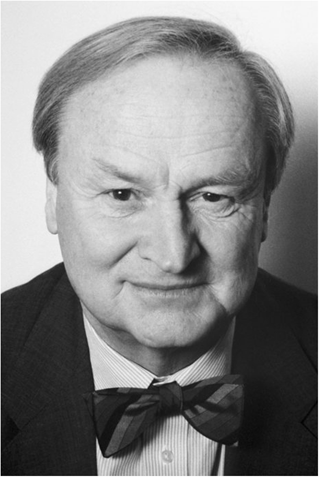 As previously announced, Emeritus Prof. Arvid Carlsson, Nobel Laureate in Physiology/Medicine year 2000, has passed away on June 29th, 2018, at the age of 95.
As previously announced, Emeritus Prof. Arvid Carlsson, Nobel Laureate in Physiology/Medicine year 2000, has passed away on June 29th, 2018, at the age of 95.
Clearly, very few individuals have had the impact on the advancement of medical treatments in neurology and psychiatry as Arvid Carlsson. His well-known seminal discovery of dopamine (DA) as a neurotransmitter in its own right came in the late 1950s. He also demonstrated in this early work that treatment with the immediate precursor to DA, L-DOPA, reversed the motor effects of reserpine in rabbits and postulated that DA deficiency may play a major role in motor disorders such as Parkinson’s disease (PD). This prediction – indeed a very early example of a translational medicine approach – was later confirmed and came to revolutionise the treatment of the disorder; to this day L-DOPA remains the mainstay of PD treatment. His work in the 1960s and 70s was instrumental also to the neuropsychopharmacology domain. Among Arvid’s contributions here may be mentioned studies pivotal to the understanding of DA receptor blockade as a key mechanism in the action of antipsychotic agents, the introduction and development of central concepts such as neuronal feedback control of dopaminergic activity, expansion of the idea of (DA) autoreceptors, as well as essential input to the ‘DA hypothesis of schizophrenia’. During this period he additionally disclosed the importance of serotonin (5-HT) transporter blockade to the action of many antidepressants, and therefore initiated (in collaboration with Astra) the development of the very first selective serotonin reuptake inhibitor (SSRI) zimelidine. This drug was put on the market in 1982, but unfortunately had to be withdrawn after only a brief period due to a rare but serious immunological adverse event. Arvid’s close interaction with Sw. pharma company Hässle (now Astra) further inspired also the development of – adrenoceptor blocking agents alprenolol and metoprolol, both of which became very important cardiovascular therapeutical drugs with great market success. For additional details on all of the aforementioned, and more, see Arvid’s own account of the era in ‘The History of Neuroscience in Autobiography’ (Vol. 2, Ed. Larry R. Squire, 1998).
My own first encounter with Arvid Carlsson was in 1975 when I came to the Department of Pharmacology, University of Gothenburg, to carry out an undergraduate exam project in Biochemistry. As evident from the brief summary above, but unbeknownst to me at that time, he was already a scientific superstar. Yet from the very beginning I was treated as an equal (which I, needless to say, in no way was). Some years later Arvid also became my supervisor towards thesis work. In addition to a curious mind and supreme scientific brilliance, an open attitude to cross-departmental and scientific discipline collaborative ventures was a hallmark of Arvid’s. It is significant from this latter perspective that he had created a ‘micro-Pharma’ enterprise consisting of an organic chemistry synthesis unit within the Department of Pharmacology in Gothenburg and a chemistry group at the Department of Organic Pharmaceutical Chemistry at Uppsala University, with pharmacology testing and evaluation of novel compounds being carried out in Gothenburg. During my time working with the latter in his labs, numerous interesting agents were discovered and characterised, many of which became important pharmacological ‘tools’ broadly used across preclinical monoamine research, including some that were also brought onwards to clinical testing. (Incidentally, the interesting DA receptor agonist/antagonist profile of (−)-3PPP/‘preclamol’ inspired the Japanese drug company Otsuka to the development of the partial DA agonist antipsychotic aripiprazole launched in the early 2000s). The chemistry–pharmacology project was tremendously productive, and eventually grew into a company form (A. Carlsson Research AB). It serves to illustrate how much Arvid valued and knew to support the exchange of ideas between people from diverse life science backgrounds and competencies within this and previous frameworks. I interacted with Arvid on several occasions and in various contexts through the years also after leaving the Department of Pharmacology in Gothenburg. He was always kind and helpful, highly vital intellectually and constantly willing to discuss science. Indeed, he was still actively pursuing research up to the time of his demise. Arvid Carlsson was a true neuropsychopharmacology giant, whose scientific legacy will endure.
From a personal perspective, I am deeply grateful for having had the great opportunity to get to know and work with Arvid Carlsson and be part of his ‘micro-Pharma’ group at the Department of Pharmacology, University of Gothenburg, all those years in the late 70s through 80s. That period provided me with a head start right into the centre of the CNS monoamine world, and was a true inspiration as well as a major, precious, influence that came to shape so much of my subsequent life and career in science. For this, I will always be immensely thankful.
RIP Arvid, and thank you for your kind friendship and pharmacological nurturing. I will always look back on my years with you with pride, appreciation, and not least greatest respect and admiration for the scientific luminary that you were and will remain.




